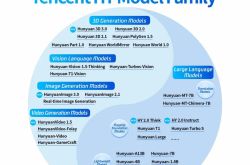National Team Moves! Accelerating China's Version of 'Starlink'
![]() 08/05 2025
08/05 2025
![]() 598
598
On July 30, China successfully launched the LEO 06 group of satellites for its satellite internet into their predetermined orbit using the Long March 8A carrier rocket from the Hainan Commercial Aerospace Launch Site. These satellites, equipped with Ka and other frequency band payloads, primarily offer users broadband communication and internet access services.
This marks the sixth batch of networking launches for China Satellite Network's 'State Grid (GW) Constellation.' The launch attracted significant attention as it came just three days after the successful deployment of the fifth batch on July 27, setting a new record for consecutive launches of China's LEO satellite constellations.
The rapid pace of 'two launches in four days' signifies China's swift progress in deploying its LEO satellite internet and represents a significant step towards initially achieving large-scale networking and operational capabilities.
The construction of the GW Constellation may now enter a 'fast lane.'
In November 2023, China unveiled a new round of commercial aerospace development strategies, focusing on satellites, vehicles, and related infrastructure. A core measure involves financial support for two 'giant constellation' plans—the 'GW Constellation' and the 'Thousand Sails Constellation'—to strengthen China's position in the low Earth orbit (LEO) communications field.
The GW Constellation, led by the National Satellite Internet Company (China Satellite Network Group, abbreviated as China Satellite Network), is China's first giant satellite internet project and its first air-space integrated 6G internet project. It comprises a mixed high and low orbit constellation, including geosynchronous orbit (GEO) and LEO satellites, divided into two sub-constellations: GW-A59 and GW-A2. Together, they form a global internet satellite constellation, with plans to launch a direct satellite communication mode for mobile phones. The GW Constellation aims to deploy a total of 12,992 satellites, with 6,080 in the GW-A59 sub-constellation in very low orbits below 500 km and 6,912 in the GW-A2 sub-constellation in near-Earth orbits at 1,145 km.
Review of the GW Constellation Launch History:
- December 16, 2024: First batch of networking satellites launched with 'one rocket, ten satellites' using the Long March 5B carrier rocket/Yuanzheng-2 upper stage combination.
- February 11, 2025: LEO 02 group of satellites launched by the Long March 8A Y1 carrier rocket.
- April 29, 2025: LEO 03 group of satellites launched by the Long March 5B carrier rocket/Yuanzheng-2 upper stage.
- June 6, 2025: LEO 04 group of satellites launched by the modified Long March 6 carrier rocket.
- July 27, 2025: LEO 05 group of satellites launched by the modified Long March 6 carrier rocket.
- July 30, 2025: LEO 06 group of satellites launched by the Long March 8A carrier rocket.
While the launch pace has significantly accelerated, the number of satellites actually deployed for the GW Constellation currently represents less than 1% of the planned total, leaving a substantial gap from the goal of tens of thousands of satellites. According to the plan, China Satellite Network aims to launch about 1,300 satellites by the end of 2029 and complete the overall deployment of around 13,000 satellites by 2035. To bridge this gap, it is imperative for the GW Constellation to expedite its deployment pace, making 2025 a pivotal year for China's LEO satellite internet industry.
As a true 'national project,' China Satellite Network has integrated state-owned resources such as Aerospace Science and Technology Corporation and Aerospace Science and Industry Corporation in a 'national team' approach. Since its inception, it has carried a significant mission, pioneering as a 'national team' in China's satellite internet field. Amid continuous breakthroughs in 'Starlink' technology and increasing launches, China Satellite Network faces considerable pressure.
In June 2025, China Satellite Network underwent significant management adjustments, completing the registration of key personnel changes. This reshuffle involved not only the general manager position but also the reorganization of the group's board of directors (with five directors resigning and three new directors joining). The general manager was changed from Zhang Hongtai to Liang Baojun, with five directors, including Zhang Hongtai, Liu Xing, Duan Hongyi, Zhao Yuerang, and Li Xiaochun, resigning and three new directors, Liang Baojun, Mou Xiangjun, and Gao Chunlei, joining.
As a result, China Satellite Network's management has completed its iteration, forming a 'triple force' of 'operators + defense + satellites' to propel the satellite network into a new phase of strategic deepening and capability upgrading. It is foreseeable that under the new leadership team, China Satellite Network will significantly enhance the efficiency and quality of subsequent networking construction.
Reduced Launch Costs: The Key to Breaking the Deadlock
In the global race for LEO satellite internet, the carrying capacity and launch capabilities of carrier rockets directly determine the networking speed and construction costs of constellations. This is also the direction for breaking the deadlock in China's LEO satellite internet industry in the coming years.
China Satellite Network used the high-capacity Long March 5B rocket for its initial deployments. While the Long March 5B excels in carrying capacity, its biggest limitation lies in its 'non-reusability.' In contrast, SpaceX's Falcon 9 reduces launch costs to $20-30 million per launch through first-stage rocket reuse technology. The Long March 5B's boosters and first-stage rockets cannot be recovered and reused after each launch. Despite these challenges, the Long March 5B remains indispensable for the initial large-scale networking of the satellite network. Experts note that the Long March 6X (CZ-6X) and Long March 8R (CZ-8R) are China's aerospace industry's core exploration targets in reusable rockets, and their future reuse will substantially reduce China's launch costs.
Beyond the Long March series rockets, the entry of private rockets will further boost China's satellite internet networking, reduce launch costs, and provide stronger support for China's satellite internet construction.
Several Chinese commercial aerospace enterprises have undergone listing tutoring, including Beijing Interstellar Glory Space Technology Co., Ltd. initiating listing tutoring registration in December 2020; Changchun Optical Satellite in March 2022; and Tianjin Aistar Aerospace Technology Co., Ltd. in June 2025.
A notable representative is Lanjian Aerospace Space Technology Co., Ltd., a leading private commercial aerospace company. It recently completed its registration for listing tutoring on the Science and Technology Innovation Board at the Beijing Securities Regulatory Bureau. As China's first private rocket enterprise to achieve successful orbit insertion using self-developed liquid engines, Lanjian Aerospace completed China's first private carrier rocket launch in October 2018 and has since conducted multiple commercial launches of the Zhuque-2 liquid oxygen-methane rocket. The company plans to conduct the maiden flight of the reusable Zhuque-3 rocket in the second half of 2025. This rocket adopts a stainless steel body structure, aiming to reduce launch costs and support national satellite internet projects such as China Satellite Network and Shanghai's Thousand Sails Constellation.
Earlier this year, Lanjian Aerospace founder Zhang Changwu stated, '2025 is a crucial year for shaping the landscape of commercial aerospace. China needs to improve its rocket recovery and satellite delivery capabilities to narrow the gap with SpaceX of the United States.'
A Race for Positioning: First-Come, First-Served
Globally, the LEO satellite internet has sparked an infrastructure frenzy, making it a 'first-come, first-served' race for positioning. Space orbits are valuable non-renewable resources, with the LEO orbit capable of accommodating about 100,000 satellites. Gaining the initiative can provide a significant advantage in subsequent competition. Additionally, satellite radio frequencies are akin to 'oil' in the communications field, belonging to limited natural resources shared by all humanity, with relatively scarce availability.
In the United States, as of June this year, SpaceX has launched 273 batches of 26 micro-version 'Starlink' v2.0 satellites using Falcon-9 rockets from Vandenberg Space Force Base in California. After this launch, SpaceX's 'Starlink' satellite count reached 8,926, including 4,212 micro-version 'Starlink' v2.0 satellites. Currently, about 7,731 'Starlink' satellites are in orbit.
In Europe, in November 2024, the European Commission (EC) and the European Space Agency (ESA) jointly signed a contract with SpaceRISE to officially launch the 'IRIS²' project (i.e., Infrastructure for Resilience, Interconnectivity and Security by Satellite). This project plans to deploy 290 satellites in low Earth orbit (LEO) and medium Earth orbit (MEO) by 2030, led jointly by Eutelsat, Spain's Hispasat, and SES, with support from the European Commission, EU member states, and ESA.
In China, besides the GW Constellation, the country's second-largest giant LEO commercial satellite constellation, the G60 Constellation (also known as the Thousand Sails Constellation), has launched 90 networking satellites and is conducting performance testing of satellite broadband network services and application demonstrations of service functions. This constellation, built and operated by Huanxin Satellite, adopts a full-band, multi-layer, and multi-orbit constellation design. Its deployment plan aims to complete the networking of over 10,000 satellites by 2030, providing global users with low-latency, high-speed, and highly reliable multi-far-integration satellite internet services. Additionally, on May 24, 2025, the International Telecommunication Union (ITU) received an application file submitted by Shanghai Lanjian Hongqing Technology Co., Ltd. for the 'Honghu-3' constellation, China's third giant LEO satellite constellation plan with over 10,000 satellites, following the GW Constellation and G60 Constellation plans.
Amid a new round of technological and industrial transformations, space is no longer merely a symbol of space powers but has become a strategic high ground for competition in the digital economy. As a crucial infrastructure connecting heaven, earth, sea, and air, satellite internet is viewed by various countries as vital support for future industrial ecology and national security. From 'seizing orbital resources' to 'dominating communication protocols,' from 'building constellation systems' to 'constructing global service networks,' a game centered on space and the Internet of Things is quietly accelerating.
References:
- Just 3 days apart! The LEO 06 group of satellites for the satellite internet was launched into space, C114 China Satellite Network, off to a flying start!
- Major reshuffle in 5G and 6G management! Will the industry landscape of China Satellite Network change?, Communication World
- Giant Constellations China's Starlink - LEO Satellite Industry Accelerates, Sina Finance
- China's National Team 'Star Network' Officially Enters the Fray, Rockets May Be More Urgent Than Satellites, Guancha.cn
- 'China's SpaceX' Arrives, Caizhongshe
- The Battle for Space Hegemony Begins! How Far Has China's Version of 'Starlink' Progressed?, IOT Intelligence







